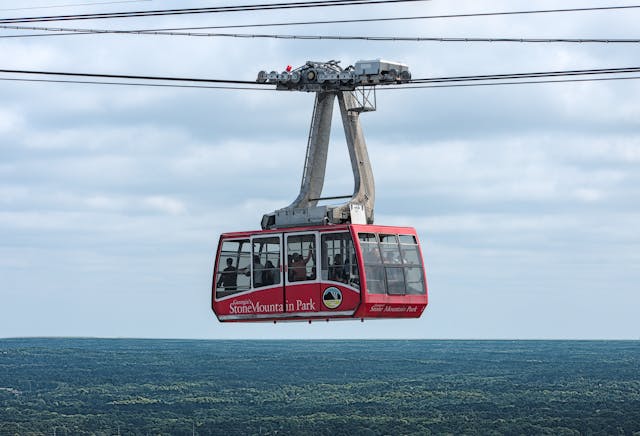
How long can a cable car be? The longest cable car in the world is the Norsjö ropeway in Sweden and it is 13.2 km long. This is probably close to the upper limit of how long a cable car cable can be. The 13.2 km part is just one section of the Norsjö ropeway, and the whole system was 96 km long. All but the 13.2 km section has been decommissioned.
The Norsjö ropeway was started in 1941 and was built to transport fuel and rubber during World War 2. The Swedish government considered building a railway line, but it was decided that it would be too costly and take too long. A ropeway could be put up that would be able to transport the resources and would be able to go over all of the terrain that would make a railway so hard to build. When they finished in 1943, they had a 96 km long system of cable cars that passed through stations. Each station would have a motor, and the cable car would switch from one line to the next to continue on its way. In 1989, most of it was decommissioned, except for the longest section, the 13.2 km section, which was kept as a tourist attraction. Cable cars cannot travel very quickly and it takes 1 hour and 45 minutes to make the one-way journey. The ropeway transported over 12 million tons of ore during its working life of 46 years, which is about 250,000 tons a year. The cable car is able to go over terrain that a railway would have had to tunnel through, but a cable car cannot transport as much as a train. A bulk cargo train carries an average of 130 tons per car and they are usually a hundred cars long or more. A railway would have been able to transport far more over the 43 years, which would perhaps have justified the building of a railway. Still, that is with hindsight and not being in the middle of a war.
The 13.2 km long Norsjö ropeway is an exception, and most of the other ropeways in the world are not as long. That is because longer ropeways have several problems that they need to overcome. The two biggest problems are the weight of the cable, and the amount of friction generated by the cable as it passes over the towers. Cable car rope is usually made of steel wires. The cable has 19 steel wires that are wrapped around a rope core, making it about 72 mm across. 1 km of this steel rope ways about 30.6 tons. The Norsjö ropeway is a looped rope, so it is 26.4 km long, which is 807 tons. The motors that pull the table have to cope with the weight of the rope plus the weight of all the cars and passengers on the rope. The weight of the rope is a limiting factor in the length of a cable car just as it is in making longer elevators for taller buildings.
A second problem is friction. A 13.2 km long cable car cannot only have a tower at each end because the weight of the cable and the cars would pull the cable down so far that it would be touching the ground. Cable cars have to have a tower every few hundred meters and each time the rope and car have to pass over the tower, there is friction. This means the motor has to work harder and becomes less efficient. A longer cable would need more towers, which would result in more friction. All of the weight of the cable and the friction means that the longer the cable, the slower the cable car.
These days, more cities are turning to cable cars. Cable cars are fairly slow, and a fair amount of money is needed to build their towers, but they actually have a lot of advantages over a city’s regular transportation network. The top speed of an urban cable car might only be 10 km/h, which is very slow when compared to a subway or bus network, but there are other factors that need to be taken into account. A subway system costs far more to build than a cable car system. A bus network is affected by traffic far more than a cable car system. A bus network can move roughly 1,800 people an hour, depending on the time of day. A cable car system can move up to 8,000 people an hour. A subway system can move up to 35,000 people an hour. However, the subway system costs far more to build and both the bus system and the subway system are far worse for the environment than a cable car system. I wonder if more cities will implement cable car systems in the future. And this is what I learned today.
Photo by Mehmet Suat Gunerli: https://www.pexels.com/photo/a-cable-car-with-a-red-and-white-stripe-25913384/
Sources
https://en.wikipedia.org/wiki/Norsj%C3%B6_ropeway
https://www.sciencedirect.com/science/article/abs/pii/S0739885924000015
https://www.cablecarmuseum.org/the-cables.html
https://en.wikipedia.org/wiki/Rail_freight_transport
https://www.cablecarmuseum.org/the-cables.html
https://www.doppelmayr.com/en/ropeway-faq

Pingback: How long can a cable car be? - English Reading Practice